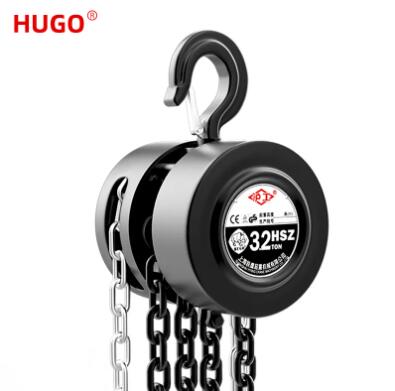Choosing the Right 3 Ton Manual Chain Block Hoist for Your Business
2024-09-10
For businesses that handle heavy lifting, choosing the right equipment can make all the difference in safety, efficiency, and productivity. A 3-ton manual chain block hoist is a popular choice for many industries due to its versatility and ease of use. However, not all hoists are created equal. In this blog, we’ll guide you through the key considerations to keep in mind when selecting the perfect manual chain block hoist for your business needs.
1. Assessing Your Lifting Requirements
Before purchasing a 3-ton manual chain block hoist, it’s essential to assess your specific lifting needs. Consider factors such as:
- Load Weight: Make sure the hoist’s 3-ton capacity is sufficient for the heaviest loads you plan to lift. If you frequently handle loads that approach the hoist’s capacity, you may want to consider a hoist with a higher capacity for added safety.
- Lifting Height: Determine the height to which you will need to lift loads. Most hoists come with different chain lengths, so choose a model that can accommodate your maximum lifting height.
2. Understanding the Different Types of Manual Hoists
While all manual chain block hoists operate on similar principles, there are variations in design and functionality. Here are a few types to consider:
- Standard Chain Block Hoists: These are the most common models, designed for general lifting tasks. They are highly versatile and suitable for a wide range of applications.
- Low-Headroom Hoists: For environments with limited vertical space, such as inside workshops or factories, low-headroom hoists offer a more compact design while maintaining high lifting capacity.
- Explosion-Proof Hoists: If you work in hazardous environments like chemical plants or oil refineries, explosion-proof hoists are designed to prevent sparking, reducing the risk of fires or explosions.
3. Key Features to Look for in a Manual Chain Block Hoist
When choosing a 3-ton manual chain block hoist, it’s important to evaluate the features that best meet your operational needs:
- Load Brake System: A reliable load brake system is essential for ensuring that the load remains securely in place when the hoist is not in operation. Look for hoists with an automatic brake that engages when you stop pulling the chain.
- Alloy Steel Chain: High-quality, heat-treated alloy steel chains provide strength and durability, ensuring that the hoist can handle heavy-duty lifting without risk of breaking.
- Rotating Hooks: Swivel hooks on both the load and suspension ends allow for easier maneuvering and positioning of the load, enhancing overall versatility.
- Durability and Construction: Since these hoists are used in rugged industrial environments, it’s important to choose a hoist made from corrosion-resistant materials like stainless steel or coated steel for long-lasting durability.
4. Portability vs. Stationary Hoists
Depending on your work environment, you’ll need to decide whether a portable or stationary hoist is more suitable:
- Portable Hoists: These models are lightweight and can be easily moved from one location to another. They are ideal for businesses that need lifting equipment in multiple areas or job sites.
- Stationary Hoists: These are mounted on a fixed beam or trolley system and are perfect for operations that require frequent lifting in a single area.
5. Ensuring Safety and Compliance
Safety should be a top priority when selecting any lifting equipment, including manual chain block hoists. Here are a few safety-related considerations:
- Load Limit Indicators: Some hoists come with built-in load limit indicators that provide visual confirmation that the hoist is operating within its safe working load. This helps prevent overloading and ensures safe operation.
- Compliance with Standards: Ensure that the hoist meets relevant safety and quality standards such as ASME B30.16 (Overhead Hoists) or ISO 12100 (Safety of Machinery). These certifications indicate that the hoist has been tested for safe and reliable use.
6. Maintenance and Care
To get the most out of your 3-ton manual chain block hoist, regular maintenance is essential. Here are a few maintenance tips:
- Regular Inspections: Check the hoist’s chain, hooks, and gearing system regularly for signs of wear and tear. Replace any worn-out parts promptly to avoid failure during operation.
- Lubrication: Keep the moving parts of the hoist, especially the gearing system, well-lubricated to ensure smooth operation and reduce friction that can lead to damage.
- Proper Storage: When not in use, store the hoist in a clean, dry environment to prevent rust and corrosion, especially if you’re using the hoist in an outdoor or humid environment.
Conclusion
Choosing the right 3-ton manual chain block hoist for your business is about more than just picking a model with the right weight capacity. By assessing your specific needs, understanding the different types of hoists available, and prioritizing safety features and maintenance requirements, you can select a hoist that will provide long-lasting reliability and performance for your heavy lifting tasks. Whether you need a portable option for job sites or a stationary hoist for a workshop, there’s a solution to suit your needs.



